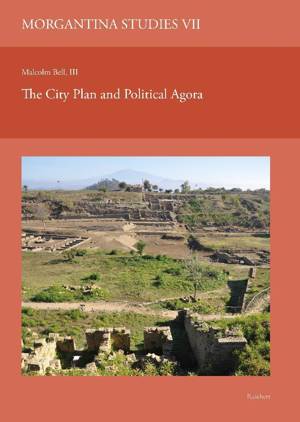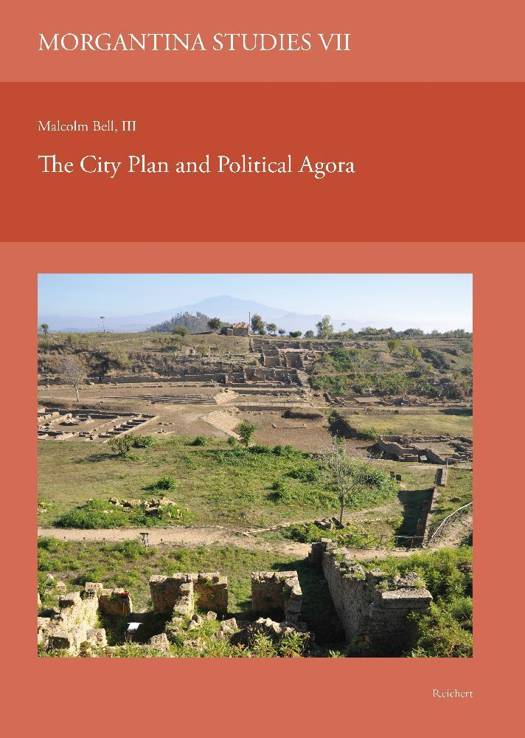
- Retrait gratuit dans votre magasin Club
- 7.000.000 titres dans notre catalogue
- Payer en toute sécurité
- Toujours un magasin près de chez vous
- Retrait gratuit dans votre magasin Club
- 7.000.0000 titres dans notre catalogue
- Payer en toute sécurité
- Toujours un magasin près de chez vous
Description
English summary: Excavations beginning in 1955 have made Morgantina into one of the most extensively known ancient cities in Sicily. Volume VII in the series Morgantina Studies describes both the new urban plan of the fifth century BCE and the city's public center or agora, where ten major buildings were added between the late classical and early Hellenistic periods, ca. 400-200 BCE. The ambitious city plan, probably owed to the charismatic indigenous leader Douketios, is shown to reflect the democratic movements of the early century BCE. The plan is characterized by lots of equal size and an unusually large agora for political assemblies. From the start the agora at Morgantina has been a focus of the U.S. excavations. Most buildings belong to an ambitious program adopted ca. 250 BCE, when the city lay under the sway of Hellenistic Syracuse. This was the age of Archimedes, Theokritos, and King Hieron II, whose economic and political reforms are perceptible at Morgantina. The building program exploited the generous available space. The result was a scenographic assemblage of monuments that took advantage of sight lines and changes in level to create a visually coherent whole. Volume VII of Morgantina Studies presents the material evidence for this major Hellenistic complex, offers reconstructions in the form of plans and drawings, and includes catalogues of objects from each structure. Political institutions are identified along with unusual building types and innovative details. While the agora of Morgantina offers a unique window on the lost civic architecture of Hellenistic Syracuse, it also documents the drastic local consequences of the second Punic war. Falling to Rome in 211 BCE, the city was depopulated and assigned to a band of mercenaries. Buildings that formerly housed political institutions were now largely given over to commerce and industry. Morgantina thus offers dramatic and detailed evidence for the traumatic effects on one Sicilian city of the transition from Syracusan to Roman rule. The book is intended for the interested public of scholars and students of ancient architecture and urbanism. Analysis of the relationship between architecture and political institutions will make it of interest to historians, as will the documentation of the specific consequences of depopulation and mercenary resettlement. Included is a study of the geology of the site by the late Sheldon Judson of Princeton University. German description: Die 1955 begonnenen Ausgrabungen haben Morgantina zu einer der am besten bekannten antiken Stadte Siziliens gemacht. Band VII der Reihe Morgantina Studies beschreibt sowohl den neuen Stadtplan aus dem funften Jahrhundert v. Chr. als auch das offentliche Zentrum oder die Agora der Stadt, wo zwischen der spatklassischen und der fruhhellenistischen Periode (ca. 400-200 v. Chr.) zehn bedeutende Gebaude errichtet wurden. Der ehrgeizige Stadtplan, der wahrscheinlich dem charismatischen einheimischen Fuhrer Douketios zu verdanken ist, spiegelt nachweislich die demokratischen Bewegungen des fruhen Jahrhunderts v. Chr. wider. Der Plan zeichnet sich durch gleich grosse Grundstucke und eine ungewohnlich grosse Agora fur politische Versammlungen aus. Die Agora von Morgantina stand von Anfang an im Mittelpunkt der U.S.-amerikanischen Ausgrabungen. Die meisten Gebaude gehoren zu einem ehrgeizigen Programm, das ca. 250 v. Chr. beschlossen wurde, als die Stadt unter der Herrschaft des hellenistischen Syrakus stand. Dies war die Zeit von Archimedes, Theokritos und Konig Hieron II., deren wirtschaftliche und politische Reformen in Morgantina spurbar sind. Das Baukonzept schopfte die grosszugigen Raumverhaltnisse ganz aus. Das Ergebnis war eine szenografische Anordnung von Monumenten, die Sichtachsen und Hohenunterschiede nutzten, um ein visuell koharentes Ganzes zu schaffen. Band VII der Studienreihe Morgantina prasentiert die materiellen Zeugnisse dieses bedeutenden hellenistischen Komplexes, bietet Rekonstruktionen in Form von Planen und Zeichnungen und enthalt Kataloge der Objekte eines jeden Bauwerks. Politische Institutionen werden ebenso identifiziert wie ungewohnliche Gebaudetypen und innovative Details. Die Agora von Morgantina bietet nicht nur einen einzigartigen Einblick in die verlorene Stadtarchitektur des hellenistischen Syrakus, sondern dokumentiert auch die drastischen lokalen Folgen des Zweiten Punischen Krieges. Nachdem die Stadt 211 v. Chr. an Rom gefallen war, wurde sie entvolkert und einer Soldnerbande uberlassen. Gebaude, die fruher politische Institutionen beherbergt hatten, wurden nun grosstenteils dem Handel und der Industrie uberlassen. Morgantina bietet somit dramatische und detaillierte Belege fur die traumatischen Auswirkungen des Ubergangs von der syrakusanischen zur romischen Herrschaft auf eine sizilianische Stadt. Das Buch richtet sich vornehmlich an Wissenschaftler*innen und Studierende von Architektur und Stadtebau der Antike. Durch die Analyse der Beziehung zwischen Architektur und politischen Institutionen sowie die Dokumentation der spezifischen Folgen von Entvolkerung und Soldnerumsiedlung ist das Buch auch fur Historiker*innen von Interesse. Das Buch enthalt ferner eine Studie des leider verstorbenen, renommierten Archaologen Sheldon Judson von der Princeton University zur Geologie des Ortes.
Spécifications
Parties prenantes
- Auteur(s) :
- Editeur:
Contenu
- Nombre de pages :
- 444
- Langue:
- Allemand
- Collection :
Caractéristiques
- EAN:
- 9783752000214
- Date de parution :
- 13-12-22
- Format:
- Livre relié
- Format numérique:
- Genaaid
- Dimensions :
- 251 mm x 32 mm
- Poids :
- 13648 g

Les avis
Nous publions uniquement les avis qui respectent les conditions requises. Consultez nos conditions pour les avis.






